Are you and your partner equally dividing your household chores? Is there such a thing as a fair division of domestic labor?
The CAKE.com Gender Inequality in Unpaid Domestic Work study explored the state of gender inequality in unpaid domestic work to bring you the answers!
This in-depth analysis was conducted between November 15 and December 15, 2023. For this study, CAKE.com partnered with Clockify, a popular time tracker. Clockify allowed study participants to enter detailed logs of every minute spent on domestic chores. Results were then analyzed to showcase the current state of gender inequality in unpaid domestic work.
Using Clockify, 21 couples from Europe and North America tracked the time they spent on their household chores. Each member of the household had a specific workspace, meaning couples could not see their partners’ tracked time. This ensured the study remained fair and accurate.
The results of the study provide valuable insights into:
- The average division of labor in households,
- The differences between couples with and without children, and
- The impact of onsite, hybrid, and remote work models on domestic work equality.
Finding #1: Women are responsible for 58% of the housework
In general, women do 16% more housework than men. This amounts to 30 more minutes per month spent on domestic labor for women.
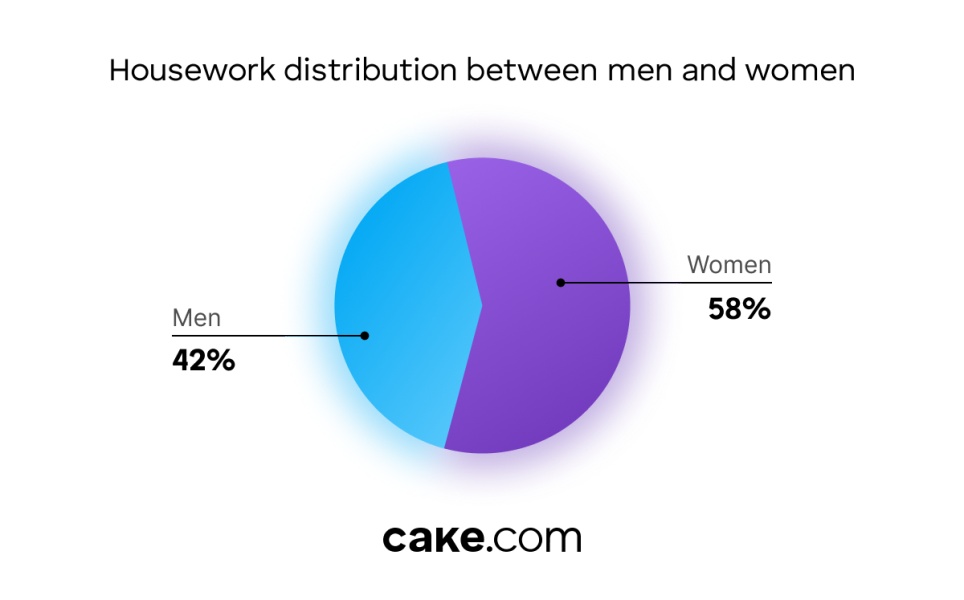
But, is the chore division the same for couples with kids and for different work models? Let’s take a look at the specific study findings.
When it comes to couples with children, women are responsible for 57% of domestic labor, while men take on 43%. While the study showed differences in the type of labor performed among couples with children, it seems that kids don’t affect the general division of housework.
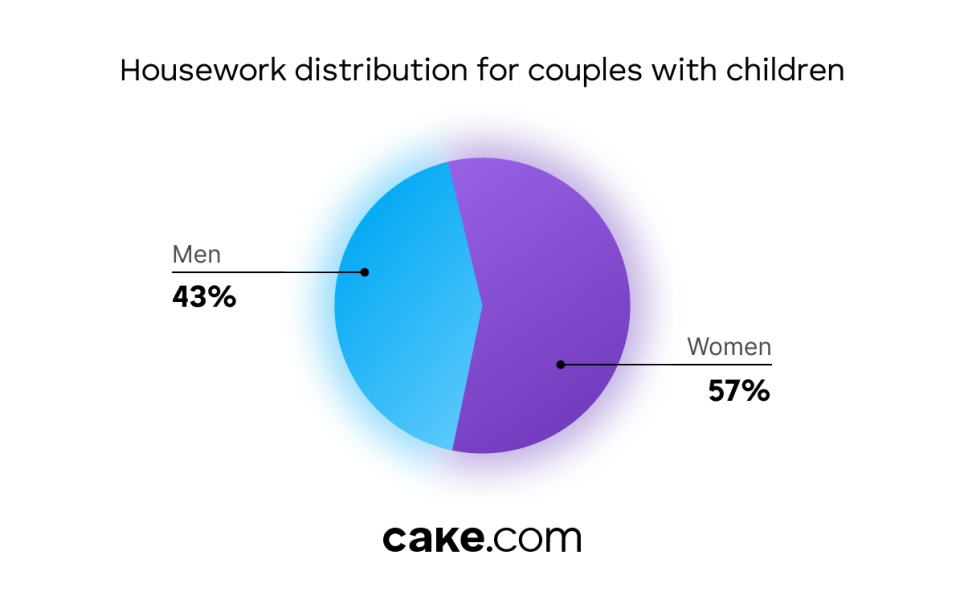
Couples were also asked to input their working model. Clockify logs were then grouped based on different working models to allow insights into how remote and onsite working affects household distribution.
Among couples who work onsite, men have a larger role in chores than women. They are responsible for 58% of domestic labor, while women shoulder 42% of the housework.
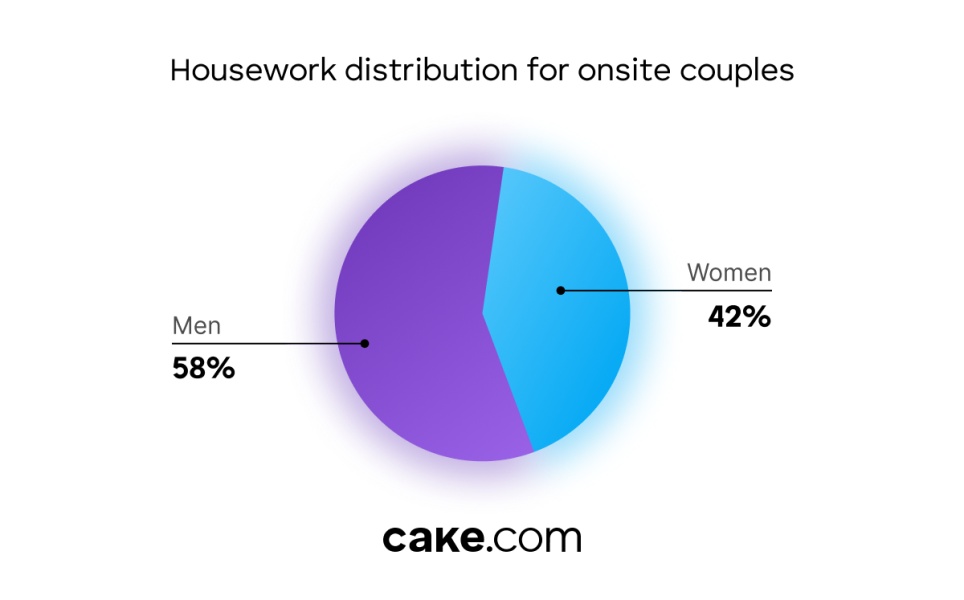
However, the numbers for partners who work remotely show a much larger contrast in the division of labor. According to the study, women in remote working models are responsible for 72% of housework, while men take on only 28%.
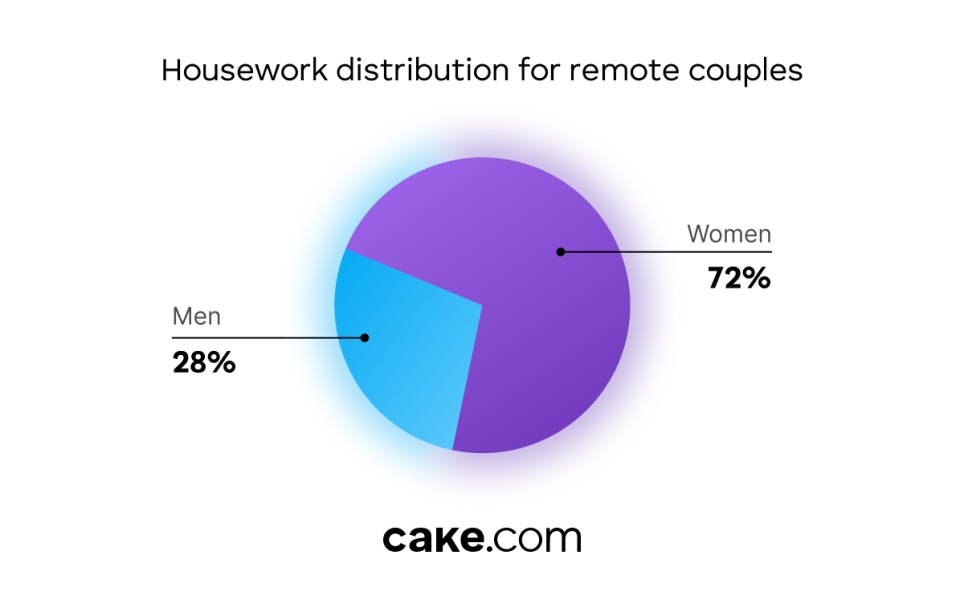
Finding #2: Remote couples spend more time on domestic labor
Unsurprisingly, remote workers dedicate more time to their household chores. Based on the activities tracked in Clockify, onsite workers have the least time for domestic work.
Here’s how much of the couples’ tracked time was spent on housework based on their work model:
- Remote workers — 43%,
- Hybrid employees — 30%, and
- Onsite workers — 25%.
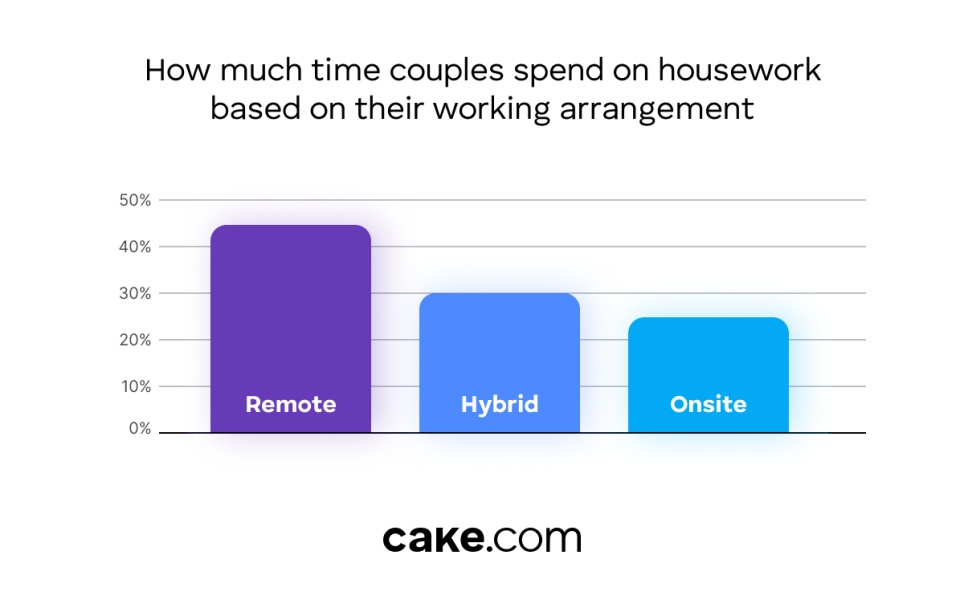
Finding #3: Meal preparation is the most common household chore
Meal preparation was the most tracked household activity, taking up 25.8% of total logged household chores. Couples were also able to specify the exact tasks for each household activity they logged in Clockify. So, according to Clockify logs, cooking takes up most of the meal preparation time.
Other common household chores include:
- House cleaning — 20.8% of logged activities,
- Childcare — 15.1% of tracked labor,
- Grocery shopping — 9.4% of logged chores, and
- Laundry — 7.6% of domestic labor.
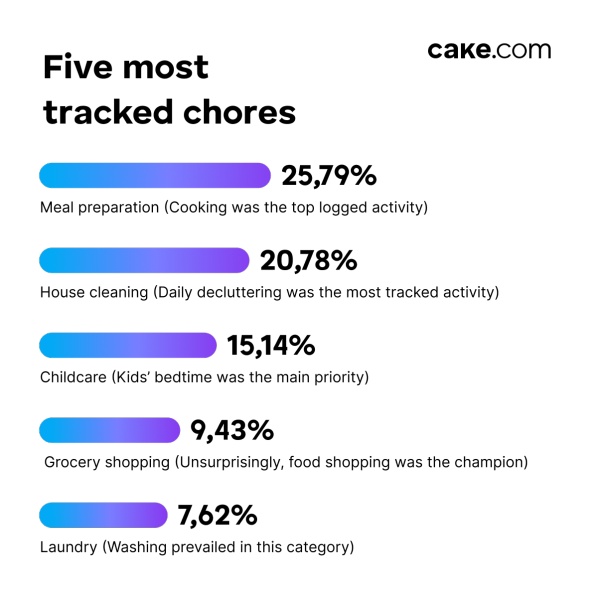
Finding #4: 70% of couples don’t divide housework by gender
The survey showed that 70% of couples don’t divide chores based on gender. Still, 30% of survey respondents believe some tasks are better suited for a specific gender.
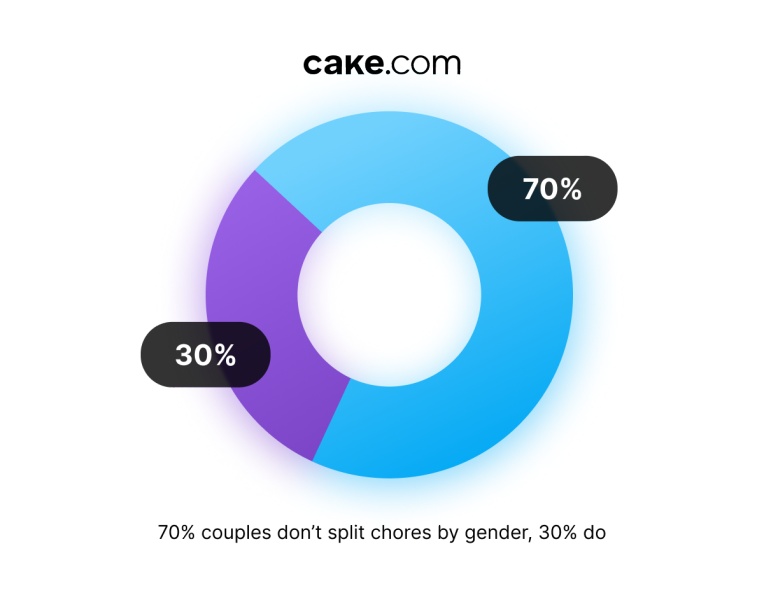
However, despite the housework not being specifically divided, the noticeable differences in the types of domestic labor performed between genders show that some level of subconscious division may be at play.
For example, women are 14.5% more likely to take on meal preparation than men. In addition, women are 4.5% more likely to shoulder house cleaning.
What’s more, even the top 5 most logged household activities show differences in the type of labor women and men perform. Laundry, for instance, isn’t in the top 5 most common household chores for men, while women spend 8.8% of their housework time on laundry. On the other hand, home maintenance is in the top 5 most common chores for men only.
Gender inequality in domestic labor findings: a step in the right direction
The CAKE.com Gender Inequality in Unpaid Domestic Work Report powered by Clockify showed a more equal distribution of unpaid domestic labor among men and women. Still, the findings indicate differences in the type of housework men and women perform as well as a huge discrepancy among couples in remote work settings.
So, how can we make domestic chores more equally distributed?
Time tracking could be the answer. According to the report findings, 42.5% of participants were unaware of how much time they actually spent on housework before tracking their time in Clockify. Thus, tracking the time for household chores and ensuring it’s distributed fairly among household members could be the key to a more equal housework distribution.
And, if you need more features aside from time tracking to boost your productivity, you should look into the CAKE.com Productivity Bundle. With CAKE.com’s Productivity Bundle, you get immediate access to our most popular products — Clockify time tracker, Pumble team collaboration tool, and Plaky project management software.
Sign up for the Productivity Bundle now.
How we reviewed this post: Our writers & editors monitor the posts and update them when new information becomes available, to keep them fresh and relevant.



